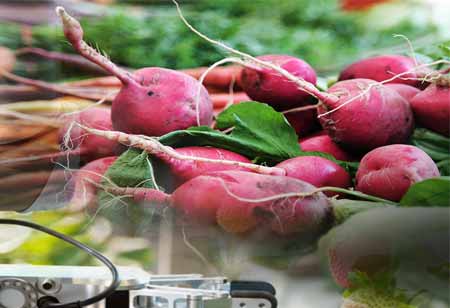Thank you for Subscribing to Food Business Review Weekly Brief
Guaranteeing Food Sector Safety By Transport Packaging Technologies And Materials
The extraordinary growth of online grocery shopping raised pressure on the sector to keep pace with demand, limit waste, and support the highest quality and safety conditions.

By
Food Business Review | Thursday, March 10, 2022
Stay ahead of the industry with exclusive feature stories on the top companies, expert insights and the latest news delivered straight to your inbox. Subscribe today.

The COVID-19 epidemic had a serious effect on every industry. Food is no exception.
The extraordinary growth of online grocery shopping raised pressure on the sector to keep pace with demand, limit waste, and support the highest quality and safety conditions.
INGREDIENTS IN THEIR NATURAL AND BULK STATES
Whether used in food processing plants, in-store, or animal feed, raw and bulk materials need special handling and transportation. For instance, polybags, often used in animal feed, tend to slide on top of one another when stacked.
For example, to decrease spillage and loss, one novel option is to use water-based adhesives, such as Signode's Lock N' Pop® glue, to secure filled and stacked polybags throughout transit. Far from hot-melt adhesives, Lock N' Pop is a cold-applied glue that does not leave a sticky residue or produce tearing during unstacking.
Also, unlike solvent- or latex-based adhesives, which can be toxic or difficult to clean and maintain, Lock N' Pop adhesive is water-soluble. As a result, its application equipment requires little maintenance.
PRODUCTS FOR CONSUMERS
Transportation safety rules for consumer food goods are dictated by their varying shelf lives and manufacturing settings.
Automated load containment systems are needed to handle millions of shelf-stable boxed food goods. For illustration, Rotary ring technology stretch wrapping equipment is a common solution in high-throughput environments. It can begin and end anywhere on the pallet, ensuring that the product is snugly wrapped and arrives safely and uncontaminated at its destination.
Dairy producers must similarly meet equally strong demand. To maintain shelf life, these products must stick to significantly stricter processing, packing, and delivery timelines. In addition, any machine downtime in the stretch wrapping zone might result in a slew of downstream issues and considerably reduce product shelf life. Therefore, it is vital to have a wrapping solution, to survive the extreme conditions found in a dairy processing factory to maintain shelf life.
PRODUCE
Corrugated boxes are normally found outside in produce fields. However, moisture might escape into the product due to weather exposure or other conditions, allowing mold or bacteria growth.
Growers may guarantee their corrugated containers are dry before packaging using a "ten-sided" (5 external + 5 internal) waterproof film. It mitigates condensation and forms an impenetrable barrier to liquids. The method also prevents bags from ripping or puncturing when stretched over the corrugated load.
AUTOMATION AND SHELF-LIFE OPTIMIZATION
Moreover, there are options to optimize shelf life and manage demand spikes. As an illustration, automated storage and retrieval systems (AS/RS) are available to emphasize the selection of products based on their expiration dates.
ABOVE AND BEYOND COVID-19
Modern transit packaging solutions can support food producers and manufacturers improve operations and enhancing profits by decreasing spoiling, breakage, and the potential for mold growth, consequently improving shelf life. End-of-line packaging and logistics innovation and enhancement represent a crucial opportunity to benefit the whole supply chain.






